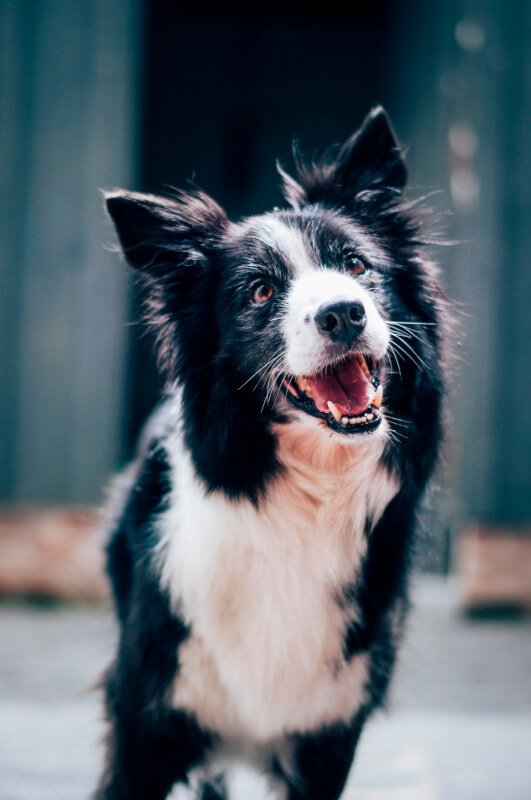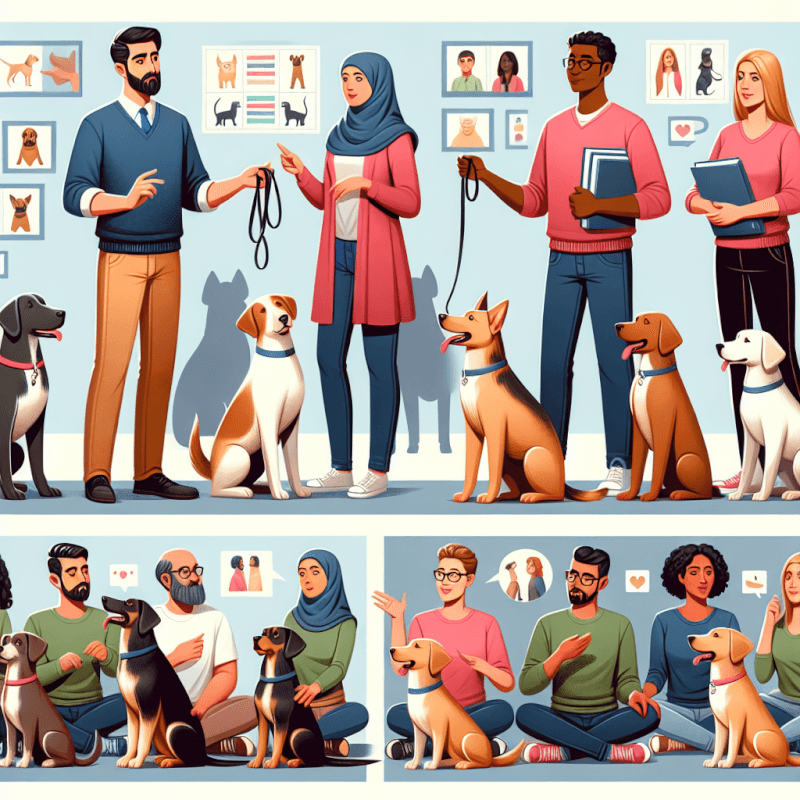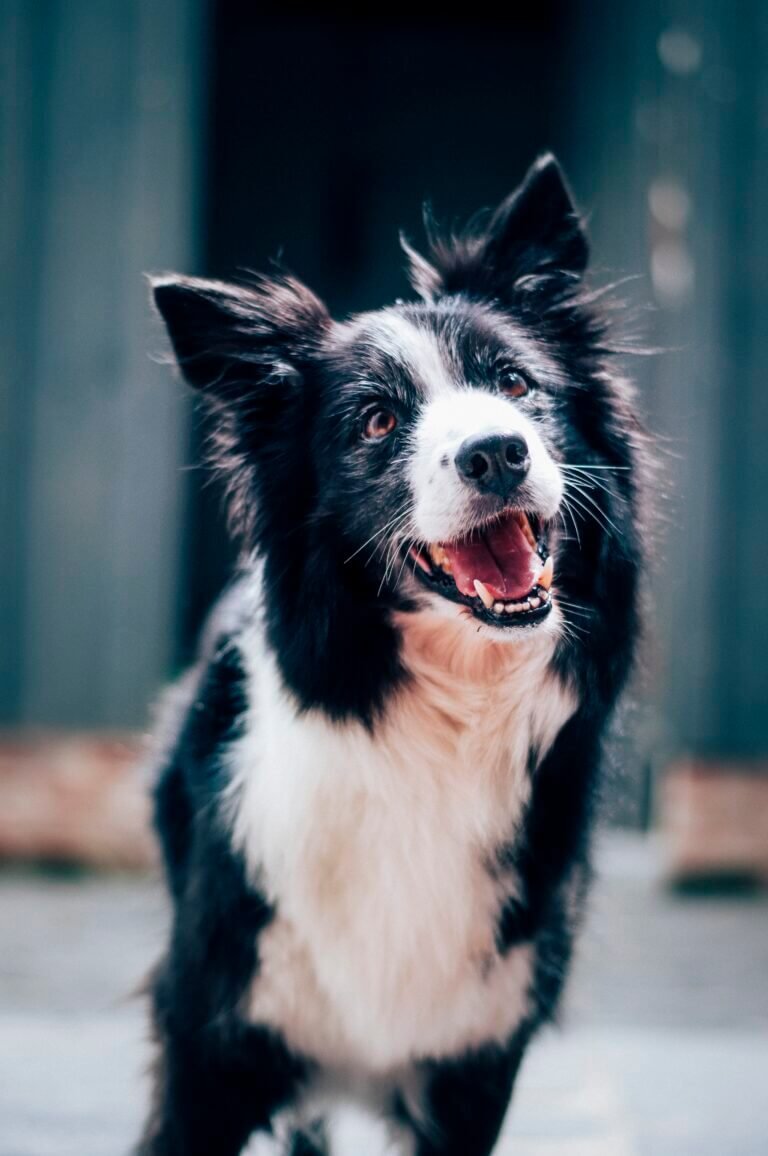Are you tired of your dog misbehaving and not responding to your commands? Look no further than Smart Dog Training And Behavior. Our expert trainers are here to help you establish a strong bond with your furry friend and address any behavioral issues they may have. From basic obedience training to more advanced skills, we tailor our programs to suit your dog’s individual needs. With our positive and reward-based techniques, you can expect to see real results and have a well-behaved and happy dog in no time. Let us guide you on the path to a well-trained canine companion.

Understanding Dog Behavior
Exploring the Canine Mind
Understanding dog behavior is crucial in ensuring a harmonious and happy relationship with our furry friends. Dogs possess an incredibly complex and fascinating mind, capable of emotions, reasoning, and learning. By delving into the intricacies of their psychological processes, we can enhance our understanding of their needs and motivations.
Ready for Cat Trivia?
Test your knowledge about cats!

Dogs are highly social animals, descended from wolves and bred over generations for companionship. This social nature is at the core of their behavior, influencing how they interact with their human counterparts and other dogs. Additionally, dogs have an innate desire to please their owners, seeking love, attention, and validation. Recognizing and appreciating these characteristics will help us build strong bonds with our dogs.
The Role of Genetics
Just as humans inherit certain traits and predispositions from their parents, dogs, too, are affected by their genes. Genetic factors play a significant role in determining a dog’s temperament, intelligence, and behavior. Certain breeds have been selectively bred for specific qualities, such as herding instincts or guarding abilities, which can influence their behavior patterns.
It is important to understand that genetics are not the sole determinants of a dog’s behavior. Factors such as early socialization, training, and individual experiences also contribute to their overall behavior and temperament. Nevertheless, having knowledge about a dog’s breed and its typical behavioral tendencies can provide valuable insights when it comes to training and addressing specific behavioral issues.
The Importance of Socialization
Socialization is a crucial aspect of a dog’s development, especially during their formative months. Exposing puppies to various people, animals, environments, and experiences helps them become well-rounded and confident adults. Socialization aids in reducing fear, anxiety, and aggressive responses, as dogs become familiar with different stimuli and learn appropriate behaviors in a range of situations.
Attending puppy socialization classes, organizing playdates, and exposing your dog to different environments are excellent ways to promote socialization. It is important to expose your dog to positive interactions, rewarding them for calm and appropriate behavior when encountering new people, animals, and environments. Early socialization lays the foundation for a well-adjusted and sociable adult dog.
Basic Training Techniques
Positive Reinforcement
When it comes to training dogs, positive reinforcement is the most effective and humane approach. The concept involves rewarding desired behaviors to encourage their repetition. Rewarding your dog with treats, praise, or playtime reinforces the idea that good behavior leads to positive outcomes.
Positive reinforcement creates a positive association in your dog’s mind, making them more receptive to learning and eager to please. Instead of focusing on punishing unwanted behaviors, redirect your dog’s attention and reward them for engaging in appropriate behaviors. Patience, consistency, and clear communication are key to successful positive reinforcement training.
Clicker Training
Clicker training is a popular method that utilizes a small handheld device called a clicker. The clicker emits a distinct sound when pressed, which serves as a marker to signal to the dog that they have performed a desired behavior correctly. Clicker training is a precise and efficient way to communicate with your dog during training sessions, as the sound of the clicker can be instantly followed by a reward.
To start clicker training, associate the clicker sound with a treat, clicking and then immediately providing a treat. Once your dog recognizes the clicker as a positive reinforcement signal, you can begin using it during training exercises. Clicker training allows for precise timing and can be particularly effective for shaping complex behaviors or tricks.
Voice Commands
Using voice commands is another essential aspect of basic training. Dogs can be trained to respond to a variety of verbal cues, allowing you to communicate and direct their behaviors. Consistency in your choice of command words and tone of voice is important for clear communication with your dog.
Common voice commands include “sit,” “stay,” “down,” and “come.” When introducing voice commands, pair each command with a physical gesture or signal to help your dog understand the desired behavior. Consistently rewarding your dog when they comply with voice commands will reinforce their understanding and compliance.
Building a Bond with Your Dog
Establishing Trust and Respect
Building a strong bond with your dog is essential for effective training and a healthy relationship. Trust and respect are the foundation of this bond. Earn your dog’s trust through gentle handling, providing a safe environment, and meeting their physical and emotional needs. Respect their boundaries, and avoid any harsh or punitive methods that can damage the bond you share.
To establish trust, spend quality time with your dog, engaging in activities they enjoy. Regular exercise, playtime, and calm grooming sessions can help in fostering a sense of trust and security. Remember, building a bond takes time and patience, so be consistent and always prioritize your dog’s well-being.
Effective Communication
Clear and effective communication is vital in strengthening your bond with your dog. Dogs primarily rely on body language and vocal tones to understand our intentions and expectations. Pay attention to your dog’s cues and respond accordingly. Use positive reinforcement, clear signals, and consistent commands to ensure that your dog comprehends your desires.
Avoid using harsh or aggressive cues that can confuse or intimidate your dog. Be patient and encouraging, providing feedback and rewards when your dog exhibits the desired behavior. Remember, effective communication builds trust and encourages your dog to actively participate in the training process.
Creating a Routine
Dogs thrive on routine, as it provides them with a sense of security and predictability. Establishing a consistent daily routine helps your dog understand what is expected of them and reduces stress and anxiety. A routine should include regular feeding times, exercise sessions, potty breaks, as well as training and playtime.
Consistency is key when it comes to establishing a routine. Try to stick to the same schedule every day, ensuring that your dog knows when to expect various activities. A well-structured routine not only contributes to your dog’s physical and mental well-being but also strengthens the bond between the two of you.
Advanced Training Methods
Target Training
Target training involves teaching your dog to touch a specific object, such as your hand or a target stick, with their nose or paw. This technique is highly versatile and can be used to teach a wide range of advanced behaviors and tricks. By using a target, you can guide and shape your dog’s movements, encouraging complex behaviors through positive reinforcement.
To begin target training, present the target object and reward your dog with a treat or praise when they touch it. Gradually shape their behavior by rewarding them for specific actions, such as touching the target with their nose or following it with their eyes. Target training allows for precise control and can lead to impressive and challenging behaviors.
Scent Detection
Dogs possess an exceptional sense of smell, and scent detection training taps into this innate ability. Whether it be searching for specific scents, such as drugs or explosives, or participating in the exciting field of canine nose work, scent detection training provides mental stimulation and rewards your dog’s natural instincts.
To start scent detection training, choose a specific scent and pair it with a reward, such as a treat or toy. Introduce the scent to your dog, and when they show interest or exhibit the desired behavior, reward them. Gradually increase the difficulty by hiding the scent in various locations, encouraging your dog to use their sense of smell to locate it. Scent detection training not only challenges your dog mentally but also strengthens the bond between you through collaboration and teamwork.
Obedience Trials
Obedience trials are a form of advanced training that test a dog’s ability to perform a series of commands and behaviors accurately and quickly. These trials showcase the training and skill level of both the dog and the handler. Obedience trials are not only a competitive activity but also a great way to challenge and reinforce your dog’s training.
In obedience trials, dogs are evaluated based on their response to voice commands, body language, and overall obedience. The competitions can range from basic commands, such as “sit” and “stay,” to more complex behaviors like heeling, retrieving, and jumping. Participating in obedience trials provides mental stimulation and strengthens the communication and teamwork between you and your dog.

Problem Behaviors and Solutions
Excessive Barking
Excessive barking can be a common problem behavior in dogs. It can be triggered by various factors, such as boredom, anxiety, or the need for attention. To address excessive barking, it is crucial to identify the underlying cause and implement appropriate solutions.
Firstly, ensure that your dog’s physical and mental needs are met. Regular exercise, mental stimulation, and social interaction can help reduce excessive barking due to boredom or pent-up energy. Additionally, addressing separation anxiety or fear-based barking requires a more tailored approach, such as desensitization techniques or seeking professional help from a certified dog behaviorist.
Teaching your dog the “quiet” command can also be helpful in controlling excessive barking. By consistently rewarding your dog when they remain calm and quiet, you can reinforce the desired behavior. Remember to be patient and consistent when addressing excessive barking, as it may take time to modify this behavior.
Separation Anxiety
Separation anxiety is a condition in which dogs experience distress and anxiety when left alone. This can lead to destructive behaviors, excessive barking, and even physical symptoms such as excessive drooling or pacing. Addressing separation anxiety requires a comprehensive approach that includes behavior modification techniques and management strategies.
Gradual desensitization and counterconditioning are effective methods to help your dog cope with separation anxiety. By gradually exposing your dog to short periods of alone time and pairing it with positive experiences, such as treats or toys, you can help them form positive associations with being alone. Professional guidance from a certified dog behaviorist may be necessary for severe cases of separation anxiety.
Creating a safe and stimulating environment for your dog when you are away can also aid in reducing separation anxiety. Provide interactive toys, ensure they have access to food and water, and consider leaving a radio or TV on to provide some comforting background noise. With patience, understanding, and consistent training, you can help your dog overcome separation anxiety and feel more comfortable when left alone.
Aggression Issues
Aggression in dogs can manifest in various forms, including growling, biting, or lunging. It is essential to address aggression promptly in order to ensure the safety of both your dog and others. Aggression can stem from fear, territorial instincts, resource guarding, or inadequate socialization, among other factors.
Seeking professional help from a certified dog behaviorist is crucial when dealing with aggression issues. They can assess the underlying causes of aggression and develop a tailored behavior modification plan. Managing and modifying aggressive behaviors often involves desensitization and counterconditioning techniques, which gradually expose the dog to their triggers and promote positive associations.
Providing appropriate outlets for your dog’s pent-up energy and mental stimulation is also important in addressing aggression. Regular exercise, engaging toys, and incorporating calm activities, such as nose work or puzzle games, can help redirect their focus and reduce aggressive tendencies. Patience, consistency, and professional guidance are key when addressing aggression in dogs.
Addressing Fear and Anxiety
Identifying Triggers
Fear and anxiety are common in dogs and can significantly impact their overall well-being. Identifying the triggers that evoke fear or anxiety is the first step in helping your dog overcome these emotional challenges. Triggers can vary from loud noises, unfamiliar environments, specific objects, or even certain individuals.
Observing your dog’s behavior and body language can help identify triggers. Watch for signs of stress or fear, such as trembling, cowering, excessive panting, or attempts to escape. Take note of the situations or stimuli that elicit these responses, as this information will be valuable in designing a tailored plan to help alleviate their fears.
Counterconditioning
Counterconditioning is a technique used to change a dog’s emotional response to a particular trigger. The process involves pairing the trigger with positive experiences, such as treats, praise, or playtime, in order to create a positive association and reduce the fear or anxiety response.
To countercondition, gradually expose your dog to the trigger at a distance where they remain calm and below their fear threshold. Pair this exposure with rewards, gradually decreasing the distance to the trigger over time as your dog becomes more comfortable. Patience and positive reinforcement are key, as rushing the process can reinforce the fear response rather than alleviate it.
Desensitization Techniques
Desensitization is a technique that gradually exposes your dog to the trigger in a controlled and systematic manner. Similar to counterconditioning, desensitization aims to reduce fear or anxiety responses by acclimating your dog to the trigger through gradual and controlled exposure.
Start by exposing your dog to a low-intensity version of the trigger and rewarding them for calm behavior. As your dog becomes comfortable, gradually increase the intensity or proximity of the trigger, always ensuring that they remain below their fear threshold. By slowly exposing your dog to the trigger in a positive and controlled manner, you can help them build confidence and alleviate their fear or anxiety response.

Specialized Training for Service Dogs
Guide Dogs for the Visually Impaired
Guide dogs play a vital role in assisting individuals with visual impairments, providing mobility, independence, and enhanced safety. Guide dogs undergo extensive training that includes obedience, navigation, and environmental awareness. These highly trained dogs learn to guide their handlers safely, avoiding obstacles and navigating various environments and situations.
Training guide dogs involves teaching them to respond to specific verbal and physical cues, guiding their handler along familiar routes, and safely maneuvering through obstacles. These dogs are not only trained to be reliable and well-behaved, but they also form a strong bond with their handler to ensure effective communication and a harmonious partnership.
Hearing Dogs for the Deaf
Hearing dogs are specially trained to assist individuals with hearing impairments, alerting them to important sounds and enhancing their safety and independence. These dogs are trained to respond to specific sounds, such as doorbells, alarm clocks, or smoke detectors, and then alert their handler to the sound by touching them or leading them to the source.
To become a hearing dog, extensive training is conducted to teach them to differentiate between various sounds and respond accordingly. Additionally, these dogs learn obedience commands and social skills to ensure they can navigate various environments and public spaces without causing disruptions.
Medical Alert Dogs
Medical alert dogs play a crucial role in assisting individuals with various medical conditions, such as diabetes, epilepsy, or allergies. These highly trained dogs are capable of detecting changes in their handler’s body odor or behavior, and alerting them or others to take necessary actions.
The training of medical alert dogs varies depending on the specific condition they are trained to detect. For example, diabetes alert dogs are trained to detect changes in blood sugar levels, alerting their handler to early warning signs of low or high blood sugar. Epilepsy alert dogs can sense changes in their handler’s body and behavior prior to a seizure, providing valuable time for the individual to prepare or seek assistance.
Advanced Behavior Modification
Resource Guarding
Resource guarding is a behavior in which a dog becomes possessive and protective over certain items, such as food, toys, or even their sleeping area. This behavior can lead to aggression and is important to address to ensure a safe and harmonious home environment.
To modify resource guarding behavior, it is crucial to teach your dog that sharing and giving up possessions is a positive and rewarding experience. Gradually introduce the concept of “trading” by offering a high-value treat or toy in exchange for the item your dog is guarding. Through positive reinforcement and repetition, your dog can learn to associate giving up possessions with positive outcomes.
Safety measures, such as managing the environment and avoiding triggers, should also be implemented when addressing resource guarding. Consulting with a certified dog behaviorist can provide guidance and support in modifying resource guarding behavior effectively and safely.
Fear Reactivity
Fear reactivity refers to an exaggerated fear response exhibited by a dog when encountering specific stimuli or situations. This reactive behavior can be challenging to address, as it often requires a comprehensive behavior modification plan that considers the dog’s individual triggers and stress levels.
Developing a desensitization and counterconditioning program, with the help of a certified dog behaviorist, is essential in modifying fear reactivity. The process involves exposing your dog to the trigger in a controlled and positive manner, gradually accustoming them to the feared situation or stimulus. Patience, consistency, and the use of positive reinforcement techniques are key to helping your dog overcome fear reactivity gradually.
Obsessive-Compulsive Behaviors
Obsessive-compulsive behaviors in dogs can manifest in various forms, such as excessive licking, tail-chasing, or repetitive paw licking. These behaviors are often rooted in anxiety or stress and may require professional intervention to address successfully.
Identifying the triggers and underlying causes of the obsessive-compulsive behavior is crucial. A comprehensive behavior modification plan, tailored to your dog’s specific needs, can help alleviate these behaviors. This may include environmental enrichment, mental stimulation, and training sessions focused on relaxation, impulse control, and redirecting their attention. Professional guidance is advised when dealing with obsessive-compulsive behaviors to ensure an effective and safe approach.

Dog Sports and Activities
Agility Training
Agility training is a popular dog sport that combines athleticism, obedience, and teamwork. Dogs are guided through a timed obstacle course that includes jumps, tunnels, weave poles, A-frames, and various other challenges. The sport enhances a dog’s physical fitness, mental alertness, and responsiveness to their handler’s cues.
Training for agility involves teaching dogs to confidently navigate and complete each obstacle while following the handler’s cues and commands. Basic obedience commands, such as “sit,” “stay,” and “come,” are essential in agility training. In addition to regular training sessions, agility classes and competitions provide opportunities for dogs and handlers to showcase their skills and teamwork.
Flyball
Flyball is a thrilling and fast-paced dog sport that involves relay races between teams of four dogs. Each dog must jump over hurdles, retrieve a ball from a spring-loaded box, and then return over the hurdles to the start/finish line. Flyball combines speed, agility, and precision, making it an exhilarating activity for both dogs and handlers.
Flyball training focuses on teaching dogs the specific skills needed to excel in the sport. This includes teaching them to jump hurdles, accurately trigger the ball-release mechanism, and return the ball promptly. Positive reinforcement and consistent training are essential in ensuring that dogs enjoy and excel in the fast-paced environment of flyball.
Canine Freestyle
Canine freestyle, also known as dog dancing or musical canine freestyle, is a creative and expressive dog sport that combines obedience, tricks, and dancing to music. Handlers and dogs perform a choreographed routine that showcases a wide range of behaviors and movements, such as spins, jumps, and weaves.
Training for canine freestyle involves teaching dogs a repertoire of tricks and behaviors that can be seamlessly incorporated into the routine. Basic obedience commands, as well as more advanced tricks, are typically included in freestyle training. Developing a strong bond, effective communication, and precise timing and coordination with your dog are key to a successful performance in this fun and dynamic sport.
Keeping Your Smart Dog Mentally Stimulated
Interactive Toys and Puzzles
Smart dogs require mental stimulation to prevent boredom and potential behavior problems. Interactive toys and puzzles are excellent tools to keep your dog’s mind engaged and challenged. These toys often require problem-solving skills and provide a rewarding experience when the dog successfully completes the task.
There are various types of interactive toys and puzzles available on the market. Treat-dispensing toys, puzzle feeders, and interactive games that require your dog to manipulate objects or solve puzzles can provide hours of mental stimulation. Additionally, rotating the toys and changing the difficulty level regularly helps to keep your dog mentally engaged.
Nose Work Games
Nose work games tap into a dog’s incredible sense of smell, providing mental stimulation and providing an outlet for their natural instincts. These games involve teaching your dog to search for specific scents or objects, such as hidden treats or toys, using their exceptional olfactory abilities.
To start nose work games, introduce your dog to the scent or object they are searching for and reward them when they make a discovery. Gradually increase the difficulty by hiding the scent or object in more challenging locations. Nose work games are not only mentally stimulating, but they also provide an opportunity for dogs to use their senses and engage in a rewarding and instinctual activity.
Training for Tricks
Teaching your dog tricks is not only fun but also mentally stimulating. Dogs love to learn and to please their owners, and training for tricks provides a platform to strengthen the bond between you while challenging their minds.
Start with simple tricks, such as “sit,” “lie down,” or “shake hands,” and gradually progress to more complex behaviors. Use positive reinforcement and reward-based training methods to ensure successful learning experiences for your dog. Tricks like “roll over,” “play dead,” or even more advanced tricks like “fetch the newspaper” or “fetch a specific toy” provide mental stimulation and entertainment for both you and your dog.
By understanding the intricacies of dog behavior, embracing positive training techniques, and investing time and effort into building a strong bond, you can create a harmonious and fulfilling relationship with your dog. Whether you’re a first-time dog owner or a seasoned enthusiast, the journey of training and understanding your dog’s behavior is both rewarding and essential for their well-being.



